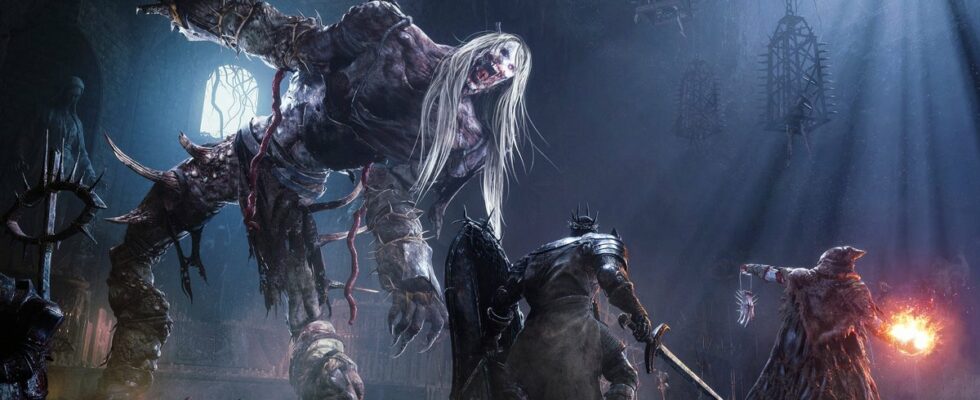From Demon’s Souls to Elden Ring, FromSoftware’s games have had a singular impact on the last 15 years of design. Game by game, the studio has created beloved rituals, based around precise combat, intricate, looping maps, and storytelling that unfolds in weapon drops and item descriptions as much as cut-scenes and dialogue.
Imitators have followed, some of them brilliantly. And so as new ideas have slowly entered the mix from outside of FromSoftware itself, Soulslike games have steadily formed a fascinating genre in their own right.
On the eve of Elden Ring DLC, we thought it might be interesting to look at some of the ideas that outside studios have brought to FromSoftware’s template. It’s surprisingly rich stuff to pick through, from spooky lanterns to crab-based weaponry. For a Soulslike, then, almost anything is possible.
Another Crab’s Treasure’s accessibility gun
Easing players into games as rigorous and precise as Soulslikes can be difficult. Dark Souls gives players the Drake Sword, which is helpfully overpowered for the first handful of areas. Another Crab’s Treasure’s approach is a little different. If you so desire it, the game straps a massive gun to your back and allows you to one-hit-kill everyone you meet, including bosses.
Would this work for every game? It would certainly be quite funny. But there’s a genuine use to being so instantly all-conquering, too. Souls games are known for their intricate worlds that are a dark pleasure to explore, and heading out with the crab gun means that there’s nothing between you and the horizon that’s going to give you too much trouble. Useful, funny, and memorable: nice work, Another Crab’s Treasure.
– Chris Donlan
Lords of the Fallen’s Umbral Lamp

For the most part, Lords of the Fallen is a fairly derivative Dark Souls experience. Except for one thing: the Umbral Lamp. This handy lantern provides access to the Umbral world, or world of the dead, turning the environment into a body horror hellscape of twisting limbs and ash. Where Dark Souls had trick walls, Lords of the Fallen allows you to raise the lantern to peer tentatively into another realm to progress, or get sucked in entirely.
Better still, the Umbral Lamp provides a second life. More than once when playing I was on the verge of defeating a tricky boss, only to be poked by a cheeky hit that thwarted me… until I emerged once more in the Umbral realm for a second wind. Holding my breath, heart beating rapidly, I kept my cool to make the most of this extra chance. It’s this edge-of-your-seat tension that Souls games excel at, that feeling you’re just on the cusp of success. Lords of the Fallen tips the balance in your favour, in yet another play on the death mechanic.
– Ed
Lies of P’s weapon assembly

Yes, the amusingly named P Organ lets players customise the protagonist puppet with buffed abilities, but it’s the weapon assembly system in Lies of P where customisation truly thrives. Souls players often talk about builds – choosing whether to focus on strength, dexterity, or magic for instance to maximise damage – but weapons are often statically tailored towards one play style. Not so in Lies of P: weapons are split into blades and handles that can be mixed and matched together, altering their stat scaling, attack type, and special ability Fable Art. So where in Souls games you may discover a new weapon that’s incompatible with your current build, in Lies of P you can always tweak any weapons found to suit. It leads to a ton of depth and replayability and, along with that P Organ, fits the clockwork tone of the game with its endless tinkering.
– Ed
Hollow Knight’s exploration
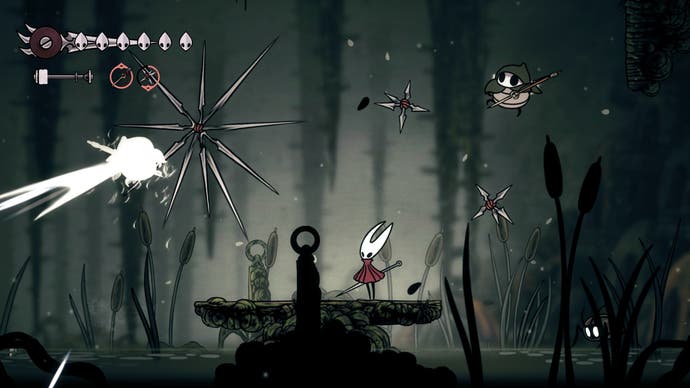
Team Cherry’s beloved game didn’t pioneer the Soulslike Metroidvania – that was arguably Salt and Sanctuary – but Hollow Knight is perhaps the most popular rendition of this particular genre merge. There are plenty of Soulsy elements to it – the benches act like bonfires, you lose your currency upon death, and its questlines are similarly cryptic – but it’s the depth of its world design that captures me the most.
Firelink Shrine is Dark Souls 1’s central hub, from which the world twists and folds on itself as you explore ever deeper into the seemingly bottomless chasm that is Lordran. There’s even artwork of that interconnected world that looks…like a Metroidvania map! Hollow Knight has that same sense of wonder as you explore, each biome connecting to the last as you descend into Hallownest further from home. And the further you edge towards despair, the more cherished are those moments sat beside a gentle flame, or perched on a bench in a moment of sanctuary.
– Ed
Star Wars Jedi: Fallen Order’s Force powers
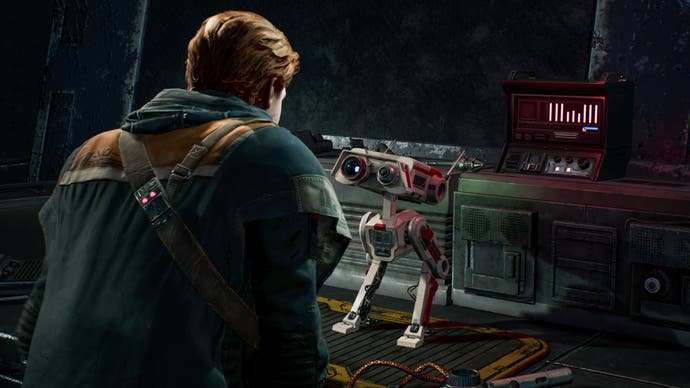
You could argue that slapping Star Wars on anything makes it infinitely cooler, such is the ubiquity of the franchise. But the very idea of a Star Wars Soulslike has massive appeal.
Respawn’s action game blends ideas from various others, but what it adds to the Soulslike genre is the simple pleasure of force pushing a Stormtrooper off a cliff. No matter how tense combat can be or how flashy the set pieces become, at the end of it all Stormtroopers remain Jedi fodder to toss aside or slice apart with a whoosh of a lightsaber. Most Soulslikes stack the odds against you in a bid for challenge, but the Star Wars Jedi games balance this with Jedi power fantasy to offer a moment of catharsis rarely seen in the genre.
– Ed
Tunic’s manual
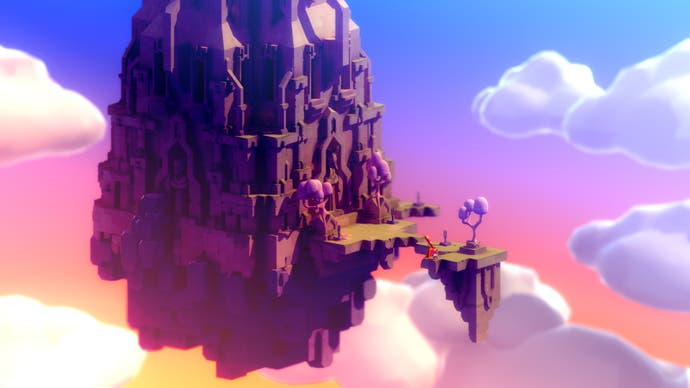
Tunic is definitely Souls-adjacent. There’s a whole world of exploration, the combat is precise and challenging, and the game doesn’t tell you all the stuff you need to know from the start. You’ll need a whisper network to see absolutely everything.
Tunic’s best idea is something that initially feels too fourth-wall-breaking for a Souls game, however. As you explore, you collect pages, and you slowly start to understand that the pages you’re finding – scraps of notes, item descriptions, sections of map – are actually the scattered pieces of the game manual for Tunic. It would be a bit of sweet nostalgic cheer if it wasn’t for the fact that the manual itself, and the gaps that build up in it as you get more of those pages, ties into some of the game’s deeper puzzles.
To me it’s a reminder that FromSoftware is acutely aware of the way that people interact with its games. It makes them with one weather eye on the way that the community will come together and solve them. Buried at the very heart of Elden Ring is a process that feels very much like game design, too. As players choose how to reforge the ring, they’re choosing the rules of the game for whatever society, whatever Order, follows. Tunic doesn’t offer you that kind of freedom, but its dance between the game world and the living room where the game is being played is the kind of thing I think FromSoftware would understand and appreciate.
– Chris Donlan
Below’s lantern
I’m not sure I like Below, but I love a lot of things about it, and that feels more important. As the game retreats into the murk of memory – I never play it anymore – things settle into a shape that may or may not reflect the truth of the design or the way that the game has been altered by recent patches.
What I find myself thinking of more than anything else, though, is the lantern. The lantern is a Below invention as far as I’m aware (it’s not that similar to the Umbral Lamp as I see it) but it’s simultaneously the one thing – above the traps, the brutal challenge, the precise combat that is just itching for you to make a mistake – that makes this feel like a Soulslike. It’s also the one thing that would fit really, really well into a Soulslike. The more I think about the lantern, the creepier it is.
As I remember, the lantern’s one of the first items you get in Below. You wash up on a rain-lashed island and you head into the dark and then descend down, down, down into the glinting depths. You need to eat and keep warm and sort out any wounds you pick up, but you also need to tend the magical, Christmas-bright lantern you’ve got with you. It reveals your surroundings and can make life a lot easier for you. But the relationship feels odd, slightly uneven. The more I played Below, the more this single item started to unsettle me.
In short, I felt like the lantern was the one thing that was really in on the whole agenda of Below, much more than me, the player. I was largely there to carry the lantern and advance it on its quest through this strange, dangerous place. I could be wounded or die and my bones would litter the ground, grass poking through the ribs, but the lantern would be fine. It was with me, and it was essential for my journey, but I didn’t seem to be essential for its journey in return.
The useful but ultimately unsettling item. This is such a good idea. And better still I love the fact that so much of it plays out in the player’s mind. The more I played of Below, the more paranoid I got, the more I started to suspect vast webs of meaning that I was caught up in. And it was the lantern that shone most brightly at such moments. It’s the lantern that I can’t forget.
– Chris Donlan
Titan Souls’ one shot
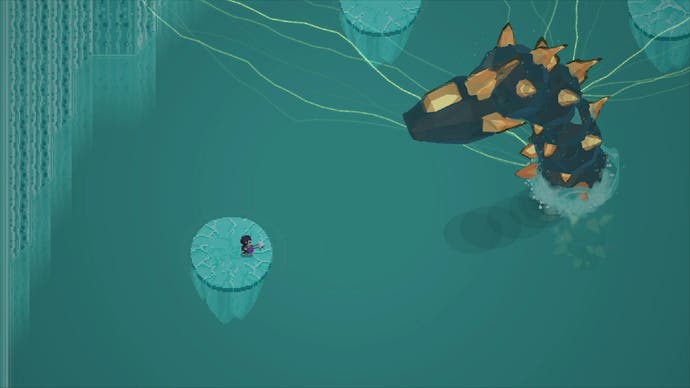
Titan Souls may be one of the earliest examples of a Soulslike, though it stretches the definition compared to some of the others on this list. No bonfires or pre-boss gauntlets here. Just the bosses themselves, but still with the signature dark fantasy world – and even more signature dance of anguish and reward.
The twist this time is in maybe one of the most clear-eyed mechanics in the last 10 years of video games. You have one attack. You cannot be hit once. Ready your bow, take a shot, and, inevitably, miss. Your only recourse is to go running after your little arrow in the hope you don’t get squished, squashed, lasered or otherwise obliterated along the way. The effect is a kind of purification of the Soulslike essence – that dance, in other words. The creaking sounds of a game pad under an increasingly tightening grip and slimmest-ever of lines between failure and success. A classic.
– Chris Tapsell
Death’s Door’s mixing of the Miyazakis
.png?width=690&quality=75&format=jpg&auto=webp)
One definitely-not-alcohol-fuelled evening at the recent Summer Game Fest, talk between a few deeply jetlagged British journalists turned to professional worst-nightmares: what if you asked a load of questions of one developer in an interview, only to realise you’d got them mixed up with another? Quickly that morphed into something much more interesting: what if you deliberately asked the wrong questions of the wrong developer? Cue pitches for asking Phil Spencer about the impact of surging interest rates on first-time buyers, or the other Phil Spencer about whether the Xbox has enough exclusives yet. (Not helped by the overlap of terms here: what’s going on with all these development issues? Are you still having trouble with leaks?)
Back to Soulslikes though, and one that we genuinely all longed for a chance to try: what if you asked one Miyazaki (Hidetaka, famed masochist of FromSoft’s darker-than-dark worlds) about the work of the other Miyazaki (Hayao, melancholic creator of bittersweet coming-of-age tales)? What if you did the opposite? And, woah – what if they worked together?
The result, at least if you were a pure literalist, might be something like Death’s Door. Mournful and heartfelt at once, with some truly brutal bosses but also sad, lost souls. Possessed pots and haunted, overgrown forests, and overblown witches lurking in castles’ steam-filled bowels. An emptying spirit world all out of balance. A stout, diminutive main character facing it all head-on. More than just taking inspiration for some set-dressing, Death’s Door is an understanding of where two great, seemingly opposed geniuses’ works not only collide, but overlap, in the small-of-stature’s refusal to give up in the face of giants.
– Chris Tapsell
